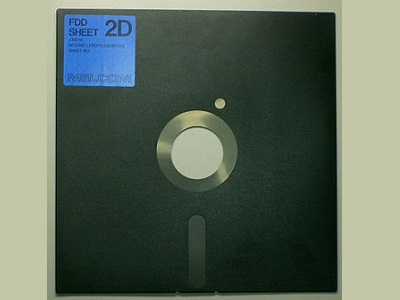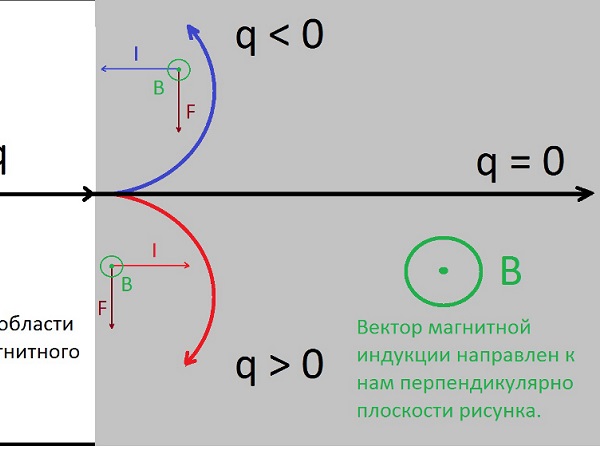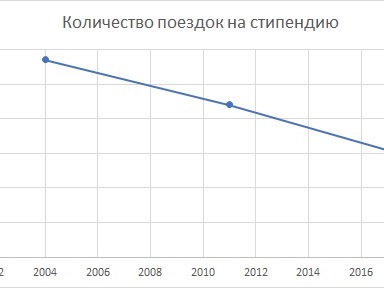man xrandr
Name xrandr - primitive command line interface to RandR extension Synopsis xrandr [-help] [-display display] [-q] [-v] [--verbose] [--dryrun] [--screen snum] [--q1] [--q12] RandR version 1.3 options [--current] [--noprimary] Per-output options [--panning widthxheight[+x+y[/track_widthxtrack_height+track_x+track_y[/border_left/border_top/border_right/border_bottom]]]] [--scale xxy] [--transform a,b,c,d,e,f,g,h,i] [--primary]
RandR version 1.2 options [--prop] [--fb widthxheight] [--fbmm widthxheight] [--dpi dpi] [--newmode name mode] [--rmmode name] [--addmode output name] [--delmode output name] Per-output options [--output output] [--auto] [--mode mode] [--preferred] [--pos xxy] [--rate rate] [--reflect reflection] [--rotate orientation] [--left-of output] [--right-of output] [--above output] [--below output] [--same-as output] [--set property value] [--off] [--crtc crtc] [--gamma red:green:blue] RandR version 1.0 and version 1.1 options [-o orientation] [-s size] [-r rate] [-x] [-y] Description Xrandr is used to set the size, orientation and/or reflection of the outputs for a screen. It can also set the screen size. If invoked without any option, it will dump the state of the outputs, showing the existing modes for each of them, with a '+' after the preferred mode and a '*' after the current mode. There are a few global options. Other options modify the last output that is specified in earlier parameters in the command line. Multiple outputs may be modified at the same time by passing multiple --output options followed immediately by their corresponding modifying options. -help Print out a summary of the usage and exit. -v, --version Print out the RandR version reported by the X server and exit. --verbose Causes xrandr to be more verbose. When used with -q (or without other options), xrandr will display more information about the server state. When used along with options that reconfigure the system, progress will be reported while executing the configuration changes. -q, --query When this option is present, or when no configuration changes are requested, xrandr will display the current state of the system. --dryrun Performs all the actions specified except that no changes are made. --nograb Apply the modifications without grabbing the screen. It avoids to block other applications during the update but it might also cause some applications that detect screen resize to receive old values. -d, -display name This option selects the X display to use. Note this refers to the X screen abstraction, not the monitor (or output). --screen snum This option selects which screen to manipulate. Note this refers to the X screen abstraction, not the monitor (or output). --q1 Forces the usage of the RandR version 1.1 protocol, even if a higher version is available. --q12 Forces the usage of the RandR version 1.2 protocol, even if the display does not report it as supported or a higher version is available. RandR version 1.3 options Options for RandR 1.3 are used as a superset of the options for RandR 1.2. --current Return the current screen configuration, without polling for hardware changes. --noprimary Don't define a primary output. Per-output options --panning widthxheight[+x+y[/track_widthxtrack_height+track_x+track_y[/border_left/border_top/border_right/border_bottom]]] This option sets the panning parameters. As soon as panning is enabled, the CRTC position can change with every pointer move. The first four parameters specify the total panning area, the next four the pointer tracking area (which defaults to the same area). The last four parameters specify the border and default to 0. A width or height set to zero disables panning on the according axis. You typically have to set the screen size with --fb simultaneously.
--transform a,b,c,d,e,f,g,h,i Specifies a transformation matrix to apply on the output. Automatically a bilinear filter is selected. The mathematical form corresponds to: a b c d e f g h i The transformation matrix multiplied by a coordinate vector of a pixel of the output (extended to 3 values) gives the approximate coordinate vector of a pixel in the graphic buffer. Typically, a and e corresponds to the scaling on the X and Y axes, c and f corresponds to the tranlastion on those axes, and g, h, and i are respectively 0, 0 and 1. It also allows to express a rotation of an angle T with: cos T -sin T 0 sin T cos T 0 0 0 1 As a special argument, instead of passing a matrix, one can pass the string none, in which case the default values are used (a unit matrix without filter). --scale xxy Changes the dimensions of the output picture. Values superior to 1 will lead to a compressed screen (screen dimension bigger than the dimension of the output mode), and values below 1 leads to a zoom in on the output. This option is actually a shortcut version of the --transform option. --primary Set the output as primary. It will be sorted first in Xinerama and RANDR geometry requests. RandR version 1.2 options These options are only available for X server supporting RandR version 1.2 or newer. --prop, --properties This option causes xrandr to display the contents of properties for each output. --verbose also enables --prop. --fb widthxheight Reconfigures the screen to the specified size. All configured monitors must fit within this size. When this option is not provided, xrandr computes the smallest screen size that will hold the set of configured outputs; this option provides a way to override that behaviour. --fbmm widthxheight Sets the reported values for the physical size of the screen. Normally, xrandr resets the reported physical size values to keep the DPI constant. This overrides that computation. --dpi dpi This also sets the reported physical size values of the screen, it uses the specified DPI value to compute an appropriate physical size using whatever pixel size will be set. --newmode name mode New modelines can be added to the server and then associated with outputs. This option does the former. The mode is specified using the ModeLine syntax for xorg.conf: hdisp hsyncstart hsyncend htotal vdisp vsyncstart vsyncend vtotal flags. flags can be zero or more of +HSync, -HSync, +VSync, -VSync, Interlace, DoubleScan, CSync, +CSync, -CSync. Several tools permit to compute the usual modeline from a height, width, and refresh rate, for instance you can use cvt. --rmmode name This removes a mode from the server if it is otherwise unused. --addmode output name Add a mode to the set of valid modes for an output. --delmode output name Remove a mode from the set of valid modes for an output. Per-output options --output output Selects an output to reconfigure. Use either the name of the output or the XID. --auto For connected but disabled outputs, this will enable them using their preferred mode (or, something close to 96dpi if they have no preferred mode). For disconnected but enabled outputs, this will disable them. --mode mode This selects a mode. Use either the name or the XID for mode --preferred This selects the same mode as --auto, but it doesn't automatically enable or disable the output. --pos xxy Position the output within the screen using pixel coordinates. In case reflection or rotation is applied, the translation is applied after the effects. --rate rate This marks a preference for refresh rates close to the specified value, when multiple modes have the same name, this will select the one with the nearest refresh rate. --reflect reflection Reflection can be one of 'normal' 'x', 'y' or 'xy'. This causes the output contents to be reflected across the specified axes. --rotate rotation Rotation can be one of 'normal', 'left', 'right' or 'inverted'. This causes the output contents to be rotated in the specified direction. 'right' specifies a clockwise rotation of the picture and 'left' specifies a counter-clockwise rotation. --left-of, --right-of, --above, --below, --same-as another-output Use one of these options to position the output relative to the position of another output. This allows convenient tiling of outputs within the screen. The position is always computed relative to the new position of the other output, so it is not valid to say --output a --left-of b --output b --left-of a. --set property value Sets an output property. Integer properties may be specified as a valid (see --prop) decimal or hexadecimal (with a leading 0x) value. Atom properties may be set to any of the valid atoms (see --prop). String properties may be set to any value. --off Disables the output. --crtc crtc Uses the specified crtc (either as an index in the list of CRTCs or XID). In normal usage, this option is not required as xrandr tries to make sensible choices about which crtc to use with each output. When that fails for some reason, this option can override the normal selection. --gamma red:green:blue Set the specified floating point values as gamma correction on the crtc currently attached to this output. Note that you cannot get two different values for cloned outputs and that switching an output to another crtc doesn't change the crtc gamma corrections at all. RandR version 1.1 options These options are available for X servers supporting RandR version 1.1 or older. They are still valid for newer X servers, but they don't interact sensibly with version 1.2 options on the same command line. -s, --size size-index or --size widthxheight This sets the screen size, either matching by size or using the index into the list of available sizes. -r, --rate, --refresh rate This sets the refresh rate closest to the specified value. -o, --orientation rotation This specifies the orientation of the screen, and can be one of normal, inverted, left or right. -x Reflect across the X axis. -y Reflect across the Y axis. Examples Sets an output called LVDS to its preferred mode, and on its right put an output called VGA to preferred mode of a screen which has been physically rotated clockwise: xrandr --output LVDS --auto --rotate normal --pos 0x0 --output VGA --auto --rotate left --right-of LVDS Forces to use a 1024x768 mode on an output called VGA: xrandr --newmode "1024x768" 63.50 1024 1072 1176 1328 768 771 775 798 -hsync +vsync xrandr --addmode VGA 1024x768 xrandr --output VGA --mode 1024x768 Enables panning on a 1600x768 desktop while displaying 1024x768 mode on an output called VGA: xrandr --fb 1600x768 --output VGA --mode 1024x768 --panning 1600x0 Have one small 1280x800 LVDS screen showing a small version of a huge 3200x2000 desktop, and have a big VGA screen display the surrounding of the mouse at normal size. xrandr --fb 3200x2000 --output LVDS --scale 2.5x2.5 --output VGA --pos 0x0 --panning 3200x2000+0+0/3200x2000+0+0/64/64/64/64 See Also Xrandr(3) , cvt(1) Authors Keith Packard, Open Source Technology Center, Intel Corporation. and Jim Gettys, Cambridge Research Laboratory, HP Labs, HP.





























